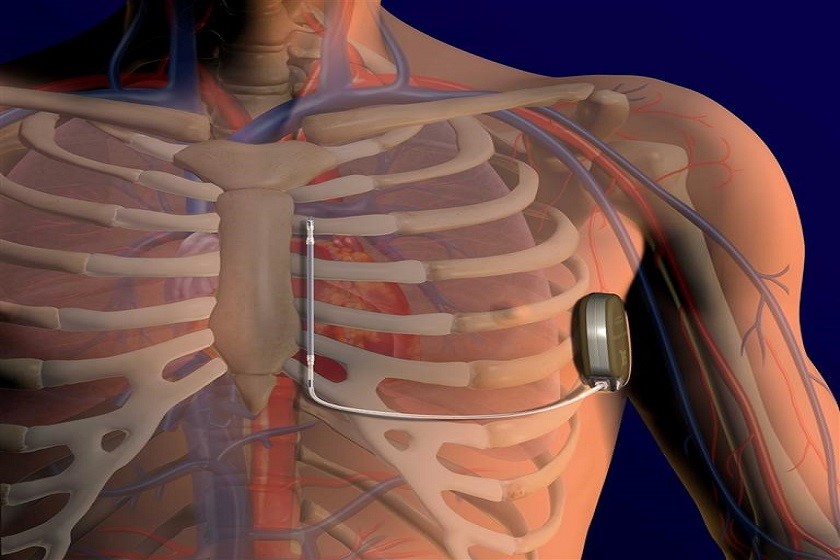
What is the Difference between Pacemaker and Subcutaneous Defibrillator?
Pacemakers and subcutaneous defibrillators are medical devices that can be implanted by means of a surgical procedure and are indicated for patients with cardiac disorders
Precisely because of the similarities in the way they are implanted and how they work, the two devices are often confused with each other.
In reality, they are two different devices:
- the pacemaker, which is much more widely used, is an electronic device that monitors the heartbeat and delivers an electrical impulse if it detects a low or very low frequency. In practice, it is used to resolve those heart blockages that cause pathological bradycardia (very slow heart rate, which causes dizziness or fainting).
- The subcutaneous defibrillator, also called implantable defibrillator or ICD (Implantable Cardioverter Defibrillator), is a surgically implanted device capable of detecting an irregular or dangerous heartbeat. If necessary, it delivers a life-saving shock that resets the heart’s activity to zero and allows normal heart rhythm to be restored.
QUALITY AED? VISIT THE ZOLL BOOTH AT EMERGENCY EXPO
Pacemakers and Subcutaneous Defibrillators, What They Are Used For
The main difference between a pacemaker and a subcutaneous defibrillator lies in the purpose for which they are implanted:
- The pacemaker is implanted in patients suffering from bradycardia and who therefore have a heart rhythm that is too slow. The pacemaker constantly monitors their heart and intervenes automatically when it detects a heart rhythm that is too low, sending electrical impulses that succeed in restoring it.
- The subcutaneous defibrillator, on the other hand, works both in the case of a very low heart rhythm (just like the pacemaker) and in the case of a very altered heart rhythm. In these cases it even delivers a shock, which restarts the heart, restoring a normal rhythm.
Depending on the type of heart disorder diagnosed, the doctor will recommend which device is most suitable.
To Whom Pacemakers and Subcutaneous Defibrillators Are Implanted
Treating different pathologies, it is clear that these two devices are indicated for different types of patients, depending on their heart rate:
- The pacemaker is indicated in patients suffering from bradycardia, i.e. a heart rhythm that is too slow. This pathology is characterised by a slow heart rhythm (less than 60 beats per minute). The oxygenated blood that is pumped is thus insufficient to meet the body’s needs, resulting in drops in energy, dizziness, dyspnoea and fainting.
- The subcutaneous ICD defibrillator is indicated in patients with malignant arrhythmias and serves to prevent sudden death. Candidate patients for implantation are people who have presented with ventricular arrhythmias or cardiac arrest; they have a high risk of having a ventricular arrhythmia or cardiac arrest.
Pacemaker and Subcutaneous Defibrillator: Implantation
As far as the implantation procedure is concerned, there are no major differences between the two.
In fact, the two devices are implanted under the skin below the left clavicle through a surgical procedure, which takes place under local anaesthesia and generally lasts 45 to 90 minutes.
The procedure is performed as an in-patient procedure.
The pacemaker, an electrical device about the size of a 2-euro coin, is placed in the thoracic area, below the collarbone.
It is connected to one or two wires (leads) which in turn communicate with the heart muscle.
The leads transmit information from the pacemaker to the heart and send electrical impulses when necessary.
The pacemaker is programmed via a special computer, thanks to which the specialist can view all the information concerning the patient’s heart and its functioning.
Subcutaneous defibrillator implantation follows the same steps as pacemaker implantation
The first part concerns the placement of the leads, i.e. the ‘electrical wires’ that reach the heart. Their number can vary from one to three, depending on the type of device to be implanted.
The leads are inserted into a vein (subclavian or cephalic, usually left).
Once in the venous system, the leads are pushed into the cardiac chambers (right ventricle, right atrium, coronary sinus) and are placed at the points where they best sense cardiac activity and are thus able to stimulate the heart with the least possible energy.
After checking the stability of the catheters and their electrical parameters, the leads are attached to the underlying muscle and then connected to the defibrillator, which is placed subcutaneously.
How long does the charge last?
Pacemakers and defibrillators are powered by a non-rechargeable lithium battery.
Therefore, the battery is discharged after a certain duration, depending on whether it is a defibrillator or a pacemaker.
Clearly, the number of times the device actually kicks in is essential: the devices constantly monitor cardiac activity and only intervene with a shock if necessary.
The more they intervene, the sooner the charge runs out.
Indicatively, pacemakers last between 7 and 10 years, while defibrillators last between 5 and 7 years.
When the battery needs to be replaced, the entire device is changed because the battery is integrated inside.
Read Also:
Emergency Live Even More…Live: Download The New Free App Of Your Newspaper For IOS And Android
Atrioventricular (AV) Block: The Different Types And Patient Management
Patient Procedures: What Is External Electrical Cardioversion?
Increasing The Workforce Of EMS, Training Laypeople In Using AED
Difference Between Spontaneous, Electrical And Pharmacological Cardioversion
What Is A Cardioverter? Implantable Defibrillator Overview
Defibrillators: What Is The Right Position For AED Pads?
Heart Disease: What Is Cardiomyopathy?
Inflammations Of The Heart: Myocarditis, Infective Endocarditis And Pericarditis
‘D’ For Deads, ‘C’ For Cardioversion! – Defibrillation And Fibrillation In Paediatric Patients
Heart Murmurs: What It Is And When To Be Concerned
Broken Heart Syndrome Is On The Rise: We Know Takotsubo Cardiomyopathy
Dilated Cardiomyopathy: What It Is, What Causes It And How It Is Treated


